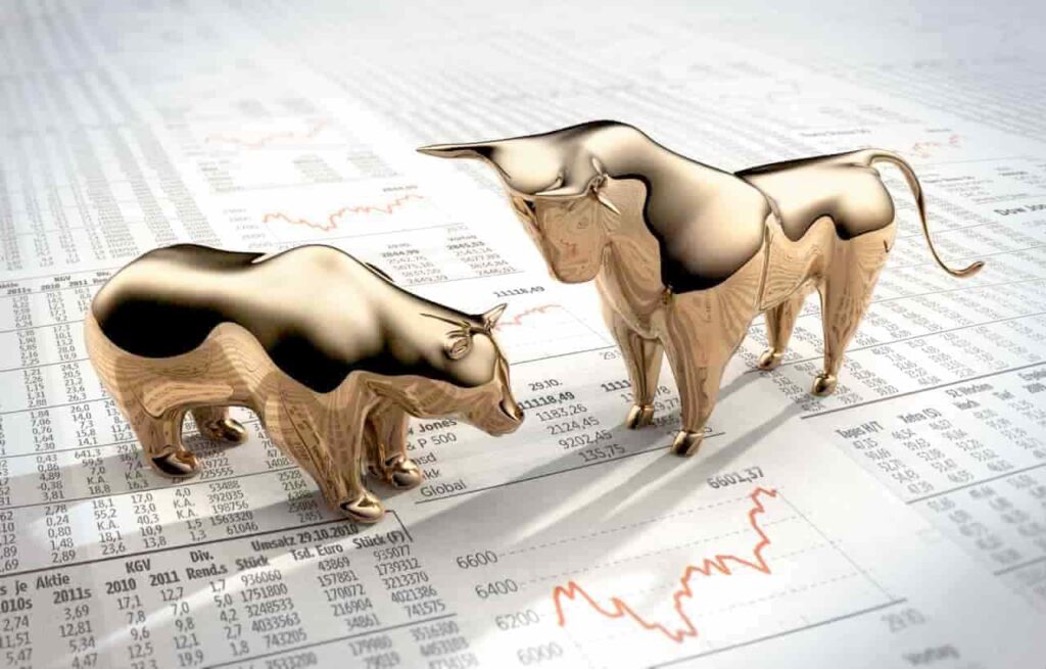Alternative macro data trends to watch
Macro sentiment: What if we could measure animal spirits
Jul 31, 2025

While alternative data adoption is widespread in the investment community, its potential in macroeconomic analysis remains underexploited. In this macro insights series, Julia Asri Meigh, Head of Macro and ESG data research at Neudata, discusses the alternative data trends to watch in macro investing.
In this post, Julia explores the growing availability of tools that track macro sentiment, or ‘economic narratives.’ More specifically, she explores how to systematically quantify animal spirits, which are the emotional and psychological factors that influence economic decision-making and move markets.
Once upon a time, animal spirits were a scapegoat for unexplainable economic outcomes
First coined by John Maynard Keynes, the term ‘animal spirits’ refers to the psychological drivers that influence human behaviour in economic decision-making. He argued that these non-rational factors shape economic behaviours, such as spending and investing, leading to boom-and-bust cycles. These factors can drive unpredictable economic fluctuations and are influenced by news, political events, and even irrational fears or optimism.
Decades later, Robert Shiller, an economist at Yale University, added to this concept, exploring how human sentiment can be contagious and shape economic decisions, which have society-wide impacts. He called these viral stories economic narratives.Both Keynes and Shiller highlighted the importance of psychological and emotional factors in economic analysis. Quantifying these drivers would enable us to price ‘animal spirits’ into financial markets and economic cycles. Lacking the tools to measure these factors, they were excluded from economic modelling and forecasting.
The age of AI has changed this. Developments in computational linguistic analysis and the growing availability of alternative data enable us to systematically quantify the emotional drivers that impact markets and the broader economy. Tracking economic narratives and themes through news articles, conference calls, company filings, social media, and central bank documents is a growing area in the alternative data space. Using Natural Language Processing (NLP) techniques, we can identify the economic themes in these texts, analyse related sentiment, and track how they change over time.
In this post, we summarise the investment use cases for macro sentiment across the following dataset types:
· News media
· Company filings and earnings call transcripts
· Central bank sentiment
News media
By utilising NLP techniques to analyse unstructured text from media sources, we can track changes in sentiment across different macro themes. Additionally, various vendors offer tools to evaluate sentiment intensity, momentum, and dispersion, which can be correlated with different asset classes. These indicators can help investors hedge their exposures to evolving economic narratives.
One study[1] explores the value of news sentiment for enhancing forecasts for industrial production and consumer prices across several countries. The paper uses data from the Global Database of Events Language and Tone (GDELT), which translates news information across 65 languages to identify 2.3k+ emotions and themes from each article. The authors find that including emotions from global news articles improved the forecast compared to three benchmark models. Emotions associated with ‘happiness’ and ‘anger’ have the strongest predictive power for forecasting industrial production and the CPI.
We discuss this study in further detail in the report, Enhancing macroeconomic forecasts with alternative data. (This article is gated, but interested readers may request access on the page)
Company filings and conference call transcripts
Company filings and conference call transcripts contain management perspectives on business performance and what is driving it. While NLP analysis of these documents to predict stock price movements has long been a widely researched area, its applications to identify economic trends remain relatively unexploited.
Analysing the tone and language executives use in company filings and conference calls can help identify specific recurring themes (such as inflation or tariffs) and measure sentiment across a broad universe of companies. Aggregating this to an industry or country level can provide early signals of potential shifting economic trends, which can be picked up ahead of broader market data releases. The timely tracking of themes and sentiment can help measure the risks, costs, and opportunities firms associate with specific shocks, policies, regulations, and crises.
Academic studies
Recent studies have delved into this area, including Economic Surveillance Using Corporate Text[2] which employs computational linguistics to analyse conference call transcripts, patents, and job postings to monitor market reactions to economic changes. The authors analyse conference call transcripts to measure a company’s risk, exposure to specific topics, and sentiment. The study suggests that this text-based data can be used to improve economic surveillance and forecasting, and help our understanding of risk transmission between firms, within industries, and across countries.
Another study, The Macroeconomics of Narratives[3] parses 10-K filings of US companies to identify optimistic/pessimistic narratives and measure their contagiousness (herding behaviour). The study finds that:
- Hiring decisions respond strongly to these narratives
- These narratives spread contagiously among firms
- The spread is responsive to economic conditions
We discuss this topic in further detail in our report on earnings call analytics:

Central bank sentiment
Central bank sentiment refers to the hawkish/dovish signals built from central bank documents. In these publications, central banks indicate potential future changes to monetary policy as an outlet for market communication. Press conferences, meeting minutes, statements and scripts are publicly available on each bank’s site. By applying NLP analysis to these documents and other sources of alternative data, several vendors have built hawkish/dovish sentiment signals which aim to anticipate changes to monetary policy.
These models are often built by parsing text to identify positive/negative statements on growth, inflation or unemployment within a specific economic context. For example, in the context of growth, positive words include rising, accelerating, firming, etc. Some models also account for the degree of influence each central banker has had historically on interest rate changes.
Investor traction
In pre-pandemic times, investors had little interest in these datasets. This is unsurprising, as rates hardly change in periods of economic stability, and any changes were predictable and offered little edge. Traction was so low across these vendors that several discontinued their central bank sentiment products. A volatile economic climate ignited interest in these datasets, prompting several sentiment providers to release central bank products.
The products that achieved notable success go beyond sourcing information from official central bank documents. These vendors also analyse news sentiment on monetary policy to identify whether the media has information in excess of central bank publications. Official central bank communications, which are checked and edited by PR and compliance teams before publication, may have limited predictability in forecasting interest rate changes. Financial and economic journalists have more freedom to express their interpretations of central bank actions.
Can analysing central bank media sentiment provide alpha?
Research[4] by MKT Media Stats suggests it can. The study finds that monitoring media tone on central bank policies can offer valuable insights into weekly yield fluctuations, especially around monetary policy meetings. The study shows that a strategy based on capturing these fluctuations in Treasury 10-year yields can generate significant returns.
We discuss this topic in further detail in our report on central bank sentiment:

Dataset limitations
As no dataset is perfect, there are, of course, limitations to consider with NLP-based sentiment analysis, which include:
- Accurately detecting sentiment in non-English language text can be challenging for models that are not trained or familiar with it. These languages can contain different dialects and nuances that a sentiment tool may not accurately pick up.
- Detecting sarcasm, irony, or other forms of figurative language can be challenging and can significantly impact the overall sentiment of a text.
- Sentiment analysis across a broad range of sources, particularly for macro use cases, can contain a lot of noise.
Macro sentiment – a constantly evolving field
Keynes refers to consumer confidence as one of the drivers that shape economic actions, which materialises in consumer spending. Consumer confidence has historically correlated to several economic indicators, such as retail sales, GDP and stock market performance. We’ve been measuring this consumer confidence through surveys for several decades. In the US, indices such as the University of Michigan Consumer Sentiment Index (MCSI) and the Conference Board Consumer Confidence Index (CCI) have been widely used.
In recent months, a divergence between soft (survey-based) and hard (directly observed) economic data has emerged. Despite robust economic indicators such as low unemployment, high GDP growth, and soaring stock markets, US consumer confidence is relatively low. These divergences commonly appear in times of uncertainty, emerging in the UK shortly after the Brexit referendum and globally since the outbreak of COVID-19.
The role of alternative data
The proliferation of alternative data has expanded our ability to measure sentiment beyond the realm of surveys. Technological progress has not only opened new opportunities to measure and track our spending and investing behaviours, but it has also influenced changes in these economic behaviours.
One possible explanation for the disconnect between consumer confidence and economic fundamentals is media bias and disinformation. In a working paper[5] that examines sentiment in newspapers across 200 years, the authors find that economic news has become increasingly more negative since 1960, recording the sharpest decline over the past 25 years.
Our economic behaviours are influenced not only by technological progress, but also by social and demographic factors. Imagine asking your grandparents how they used to spend and invest, then telling them that you're just looking for the next Nvidia and that their house deposit cost the same as your last ski trip.
Change is one of the only certainties in these uncertain times. Fortunately, we now have more advanced tools to monitor and understand these changes.
For further information, please contact julia@neudata.co
References
[1] SonjaTilly, Markus Ebner, Giacomo Livan (2021) Macroeconomic forecasting through news, emotions and narrative
[2] TarekHassan, Stephan Hollander, Askash Kalyani, Laurence van Lent, Markus Schwedeler, Ahmed Tahoun, (2025) Economic surveillance using corporate text
[3] JoelFlynn, Karthik Sastry, (2024) The macroeconomics of narratives
[4] Musa Amadeus, Rajeev Bhargava, Tim Graf, Michael Fuidi, Michael Metcalfe, Gideon Ozik, Ronnie Sadka (2022) Central Bank Monetary Tones and Yields
[5] Jules H.van Binsbergen, Svetlana Bryzgalova, Mayukh Mukhopadhyay & Varun Sharma(2024) (Almost) 200 Years ofNews-Based Economic Sentiment

.jpg)
.jpg)




